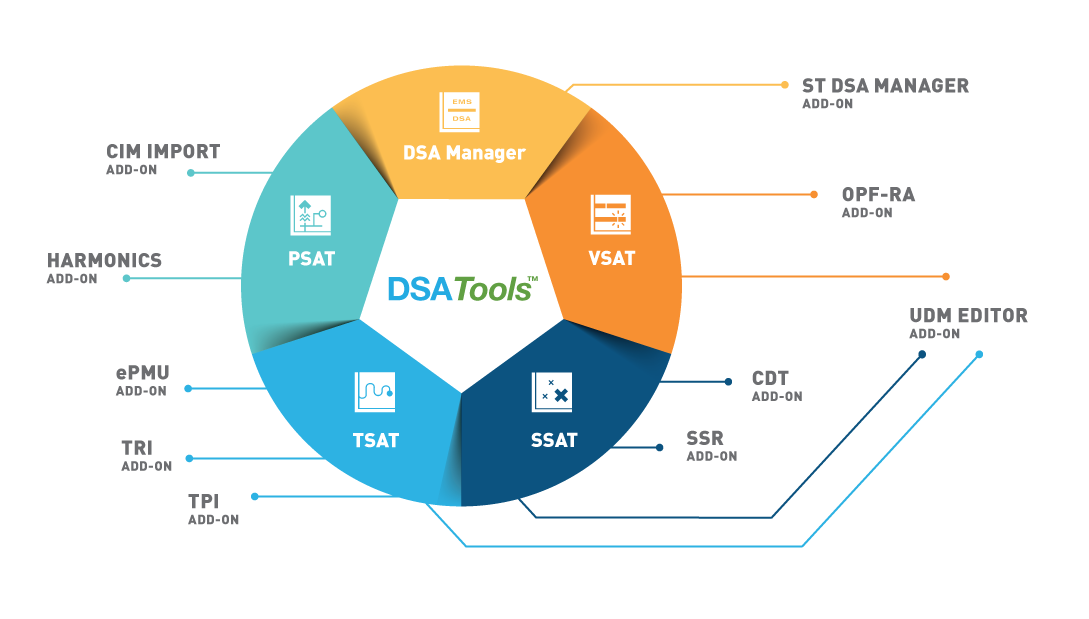DSATools v24.0 (PSAT, TSAT, VSAT, SSAT, and GSA)
DSATools Dynamic Security Assessment Software PDF

Key Components of DSATools:
PSAT (Power System Analysis Tool):Load Flow Analysis: Determines the steady-state operating conditions of a power system.Optimal Power Flow (OPF): Optimizes the power flow to minimize costs or losses while satisfying constraints.Small-Signal Stability Analysis: Analyzes the stability of the system under small disturbances.TSAT (Transient Stability Analysis Tool):Transient Stability Analysis: Evaluates the ability of the power system to maintain synchronism after large disturbances like faults or loss of generation.Dynamic Simulation: Simulates the dynamic behavior of the power system over time.VSAT (Voltage Stability Analysis Tool):Voltage Stability Analysis: Assesses the systems ability to maintain steady voltages at all buses under normal and contingency conditions.Continuation Power Flow: Determines the maximum loadability of the system.SSAT (Small-Signal Stability Analysis Tool):Eigenvalue Analysis: Computes the eigenvalues of the system to assess small-signal stability.Modal Analysis: Identifies the modes of oscillation and their damping characteristics.GSA (General Stability Analysis):General Stability Analysis: Provides a comprehensive analysis of both small-signal and transient stability.
Features:
User-Friendly Interface: Intuitive graphical user interface (GUI) for easy navigation and analysis.Comprehensive Reporting: Detailed reports and graphical outputs for analysis results.Integration with Other Tools: Compatibility with other power system analysis tools and data formats.Scenario Analysis: Ability to simulate and analyze various scenarios and contingencies.
Applications:
Power System Planning: Helps in the planning and expansion of power systems.Operational Analysis: Assists in the real-time operation and control of power systems.Research and Education: Used in academic and research institutions for teaching and advanced research in power systems.
System Requirements:
Operating System: Compatible with Windows and Linux.Hardware: Requires a computer with sufficient processing power and memory to handle large power system models.
Licensing:
DSATools typically requires a license for full access to its features. Licensing options may include single-user licenses, network licenses, and academic licenses.
Support and Training:
Technical Support: Available for users to resolve technical issues and provide guidance.Training Programs: Offered to help users get the most out of the software, including workshops and online tutorials.
DSATools is a powerful and versatile suite that plays a crucial role in ensuring the reliability, stability, and efficiency of modern power systems.
